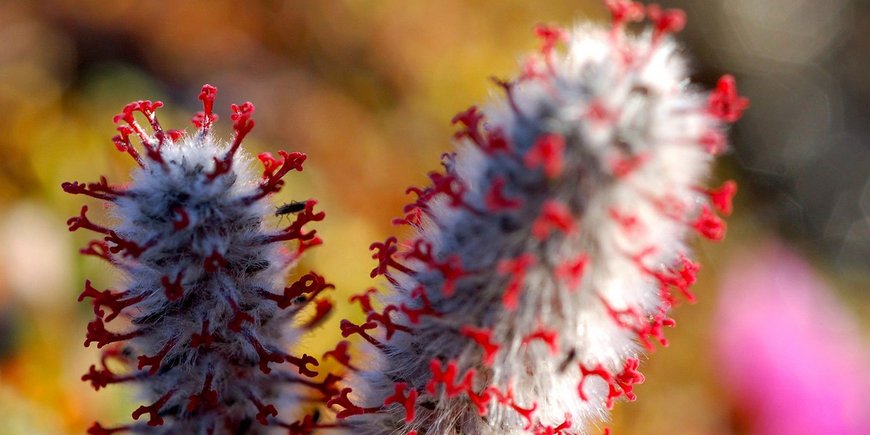Remote sensing with satellites or drones is becoming more and more important in the field of geoscience. With this approach data from places that are hard or dangerous to monitor from the ground can be collected in a consistent manner. The Arctic is one example of such a scientifically interesting environment that is difficult to monitor. But remote sensing in the Arctic comes with an inherent set of challenges. The short and rapidly advancing growing season, persistent cloud cover as well as the low and complex vegetation canopies provide unique obstacles for proper research.
In an effort lead by Alison Beamish of GFZ section 1.4 “Remote Sensing and Geoinformatics” an international team of researchers has collected data and knowledge about remote sensing in the Artic from studies reaching back more than 15 years. The paper emerged from a workshop at the 2018 International Circumpolar Remote Sensing Symposium hosted by Alfred Wegener Institute, Helmholtz Centre for Polar and Marine Research (AWI) Potsdam. Here are the main conclusions now published in the journal “Remote Sensing of Environment”:
- Optical remote sensing of Arctic tundra vegetation benefits from both legacy satellite programs such as Landsat and MODIS as well as emerging technologies such as drones
- The majority of research in the last 15 years has focused on long-term productivity trends derived from legacy platforms
- Validation of remote sensing derived vegetation properties and trends is lacking due to the logistical challenges of working in the Arctic region
- Better knowledge of factors like hydrology, precipitation and snow depth is needed to better understand observed trends
- The continuation and comparability of satellite sensors as well as a continued commitment to freely available data are required to compile the temporally dense datasets required to understand rapid Arctic change
“The paper provides a timely review for researchers developing remote sensing hardware and software to sample Arctic tundra vegetation as well as researchers who use these technologies to address scientific questions related to rapid Arctic change”, says Alison Beamish. “By outlining remaining challenges and best practices surrounding optical remote sensing of Arctic tundra vegetation we hope to help inform how and where future research in the field is conducted.” (ph)
Original study:
Beamish et al., 2020. Recent trends and remaining challenges for optical remote sensing of Arctic tundra vegetation: A review and outlook. Remote Sensing of Environment. DOI: 10.1016/j.rse.2020.111872
Image:
An Arctic willow (Salix arctica) in bloom on Ellesmere Island, Nunavut in the eastern Canadian High Arctic (Photo: Alison Beamish).
https://media.gfz-potsdam.de/gfz/wv/pm/20/11305b_willow_Alison-Beamish.jpeg








![[Translate to English:] Torsten Sachs in front of a climate station on a field](/fileadmin/_processed_/3/9/csm__TorstenSachs_bearbeitet_GS_4a1365ef84.jpeg)

![[Translate to English:] left image flood at the Ahrtal: image from above, several houses are flooded; left image:: Heidi Kreibich;](/fileadmin/_processed_/4/4/csm_Bild2_9af0130e9f.png)



![[Translate to English:] Start der Vega Rakete](/fileadmin/_processed_/6/4/csm_20231201-kachel_Vega-VV23-launch_ESA-CNES-Arianespace_706716b68c.jpeg)









![[Translate to English:] Poster exhibition at the Brandenburg Hydrogen Day at the GFZ, some participants in the foreground](/fileadmin/_processed_/6/5/csm_Erster_Brandenburgischer_Wasserstofftag_GFZ_402fcec95e.jpeg)
![[Translate to English:] Group picture of the participants](/fileadmin/_processed_/9/4/csm_20231108_CAWa-Workshop-Tashkent_Gruppenbild_99ea779d8a.jpeg)

![[Translate to English:] [Translate to English:] Hörsaal](/fileadmin/_processed_/e/6/csm_H%C3%B6rsal_e21ac645fb.jpeg)


![[Translate to English:] The Delegations in the Historic Library on the Telegrafenberg. In the back there are from left to right, the Dutch Ambassador for Germany, Ronald van Roeden, the Dutch Minister for Education, Culture and Science, Robbert Dijkgraaf and the scientific director of the GFZ, Susanne Buiter.](/fileadmin/_processed_/d/b/csm_Kachel-2_9eba4b4212.jpeg)

